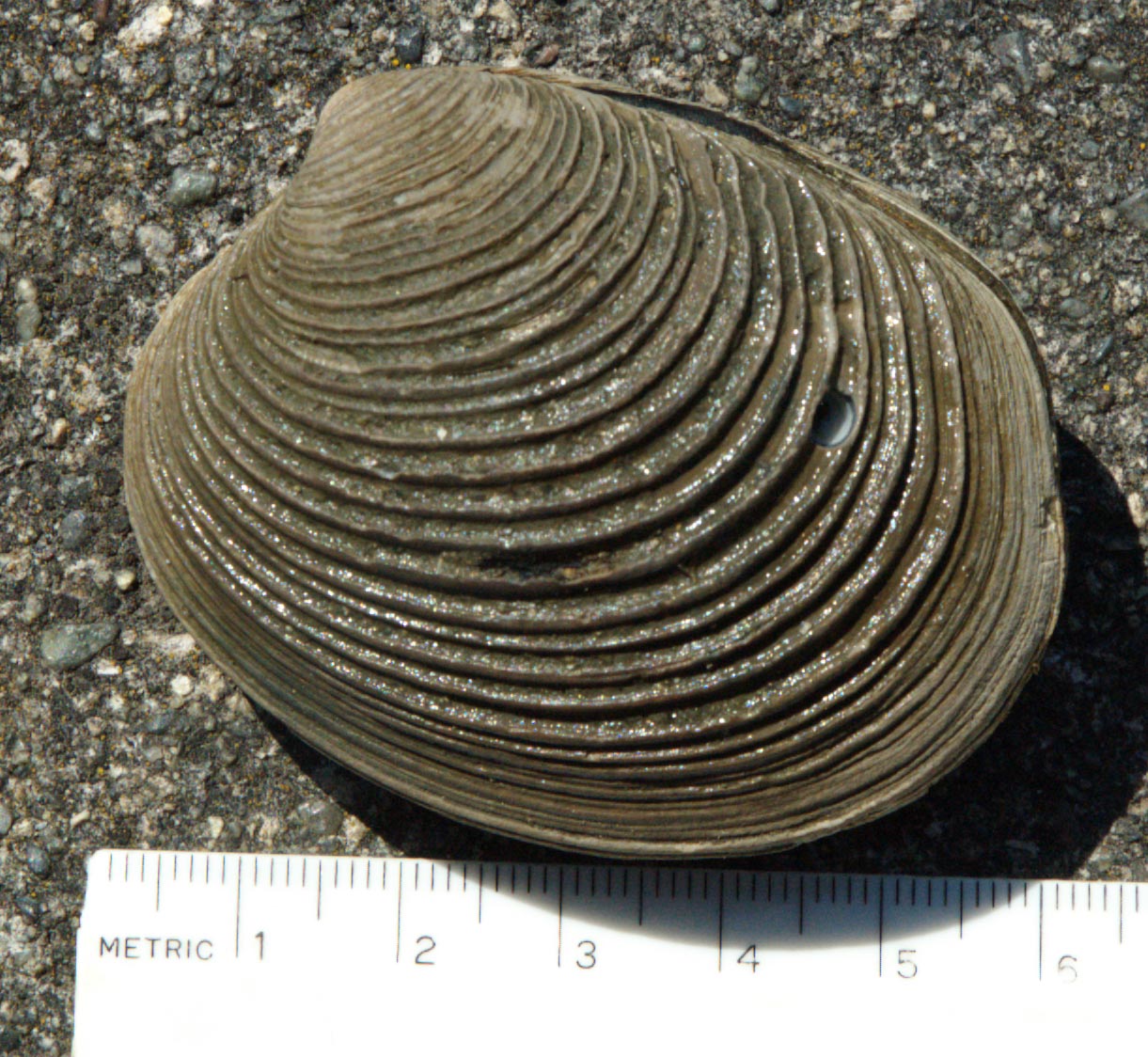Humilaria kennerlyi (Reeve, 1863)
Common name(s): Corrugated clam, Ribbed clam, Kennerly's venus
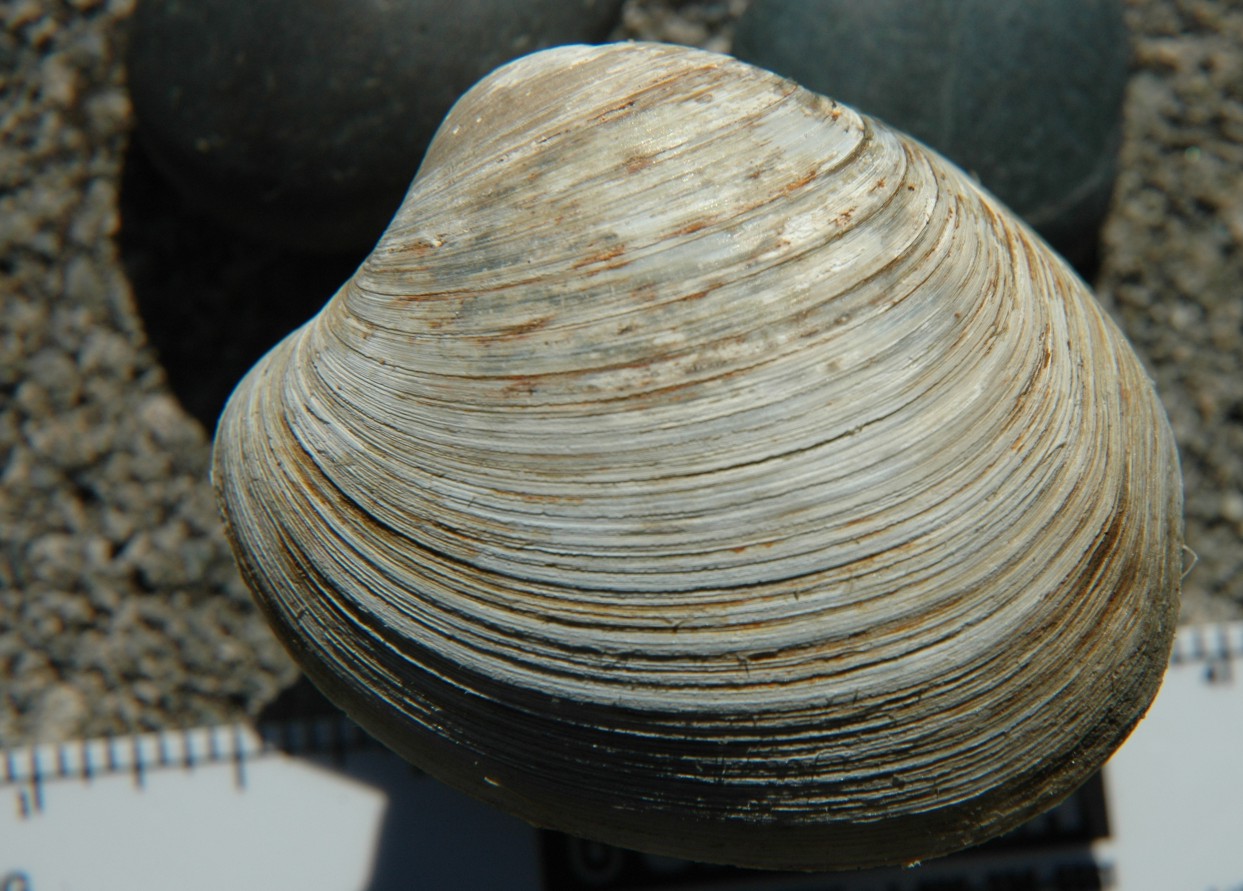
How to Distinguish from Similar Species:Saxidomus gigantea gapes at the posterior end and its concentric ridges do not bend toward the umbones, plus it can grow to much larger than 10 cm. Protothaca staminea has radial ribs and has small serrations on the ventral margins of the valves. Venerupis philippinarum also has radial ribs, the interior of its valves is yellowish, it often has a purple stain inside, and it tends to be longer in relation to its height.
Geographical Range: Prince William Sound, AK to Santa Rosa Island, CA
Depth Range: Intertidal to 45 m
Habitat: Sand and gravel
Biology/Natural History: This species is common but not abundant. Predators include Cancer magister and the seastars Orthasterias koehleri and Pisaster brevispinus. Seastars often attack this clam, which lives fairly shallowly in the sediment. The clam closes so tenaciously that the shell ridges may chip before the clam will open. Apparently this may sometimes deter predation by the seastars.
The concentric lines on this shell form a heart-like shape (lunule)
in the region just anterior to the umbones if one looks at the shell from
the anterior end.
| Return to: | |||
| Main Page | Alphabetic Index | Systematic Index | Glossary |
General References:
Harbo,
1997
Morris,
1966
Morris
et al., 1980
O'Clair
and O'Clair, 1998
Rice,
1973
White,
1976
Scientific Articles:
Web sites:
General Notes and Observations: Locations, abundances, unusual behaviors:
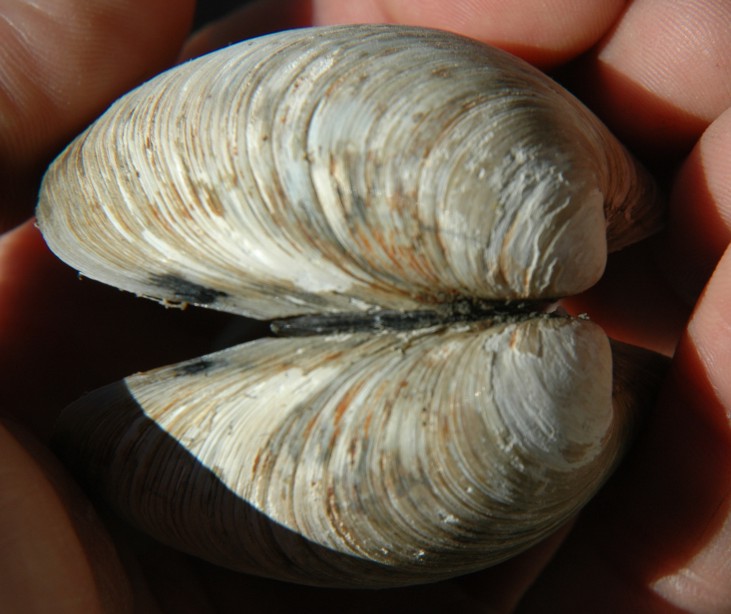
The hinge
ligament is mainly external, as is common in Family
Veneridae
The pallial
line has a well-developed pallial
sinus (the notch on the left), which the long siphons
are retracted into. This is a view of the right valve.
The two adductor
muscle scars are near the anterior
and posterior
ends and are of similar size.
| Left hinge
(anterior = left) |
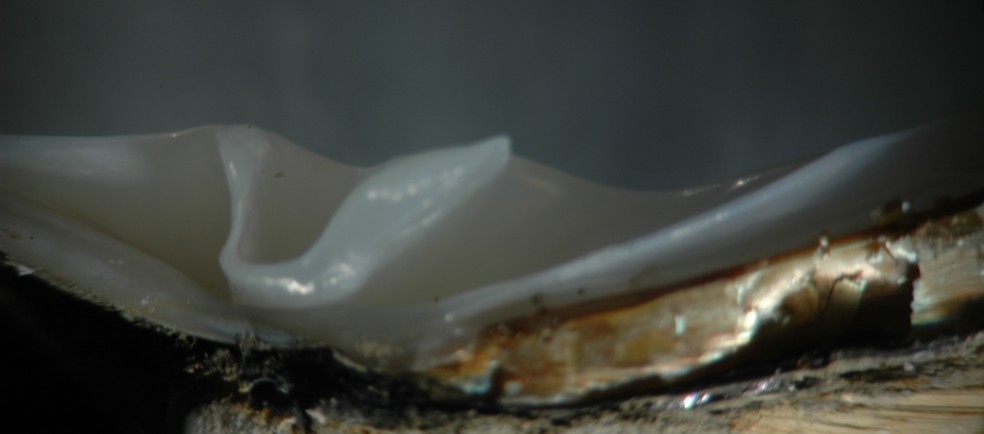 |
| Right hinge
(anterior = left) |
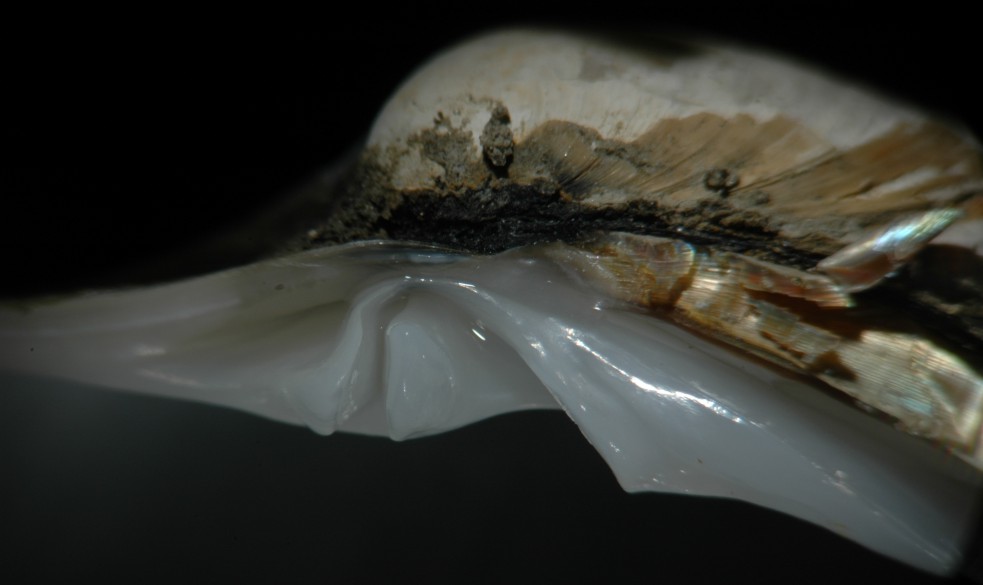 |
| Humilaria kennerlyi has three teeth on both the left and the right hinge, as is characteristic of family Veneridae. Unlike some other members of the family, the posteriormost tooth on the right valve is not bifid. | |
